I crawled out of the boat tent as soon as the sky started growing light; a few leftover raindrops rolled off the edge of the tarp and down my back as I wriggled past. I had spent the evening huddled in my sleeping bag reading and looking at charts, shuffling gear around to keep things dry as rain pattered steadily on the tent. With a wide sleeping platform and a tent to keep me dry, my new boat was proving to be luxuriously comfortable, at least by backpacking standards, but September nights on the Great Lakes are long. After so many hours aboard, I was ready to be moving again. I climbed out into knee-deep water and waded ashore. I left my malfunctioning VHF radio in the car and returned to simpler methods of weather forecasting for this cruise—methods as simple as hearing the patter of raindrops overhead. An improvised boat tent and plenty of books helped me wait out the rain at South Benjamin Island.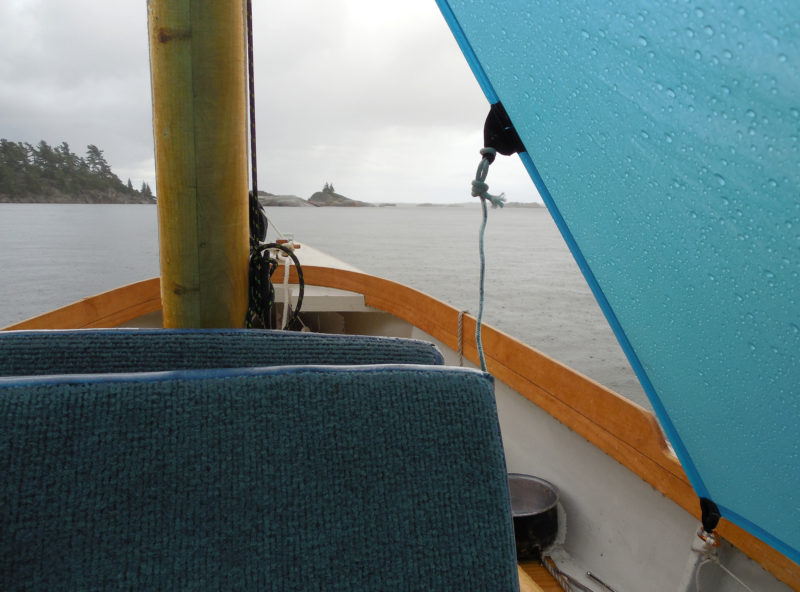 photographs by the author
photographs by the author
Join The Conversation
We welcome your comments about this article. To include a photo with your remarks, click Choose File below the Comment box.

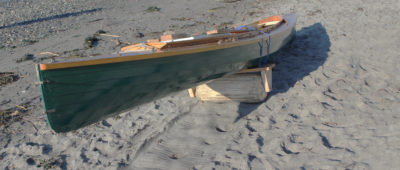
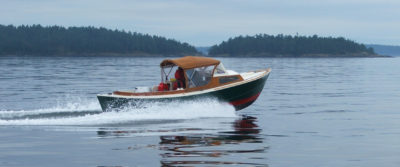

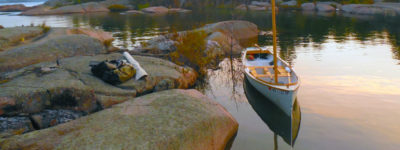
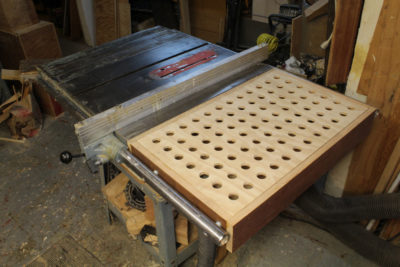
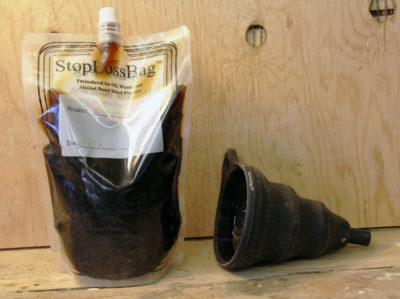
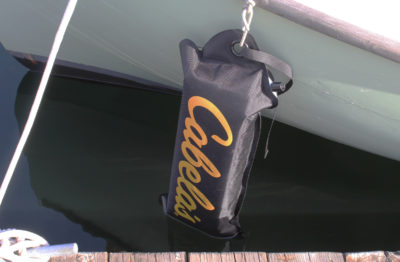
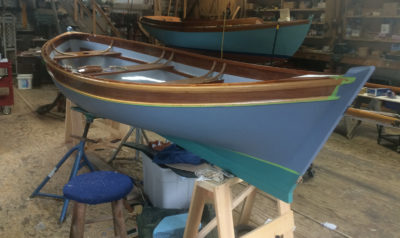
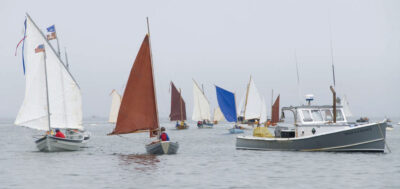
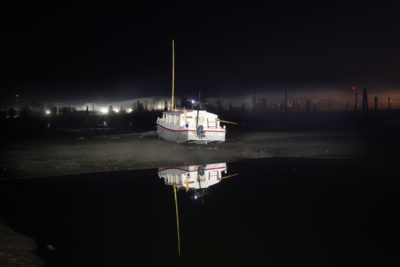
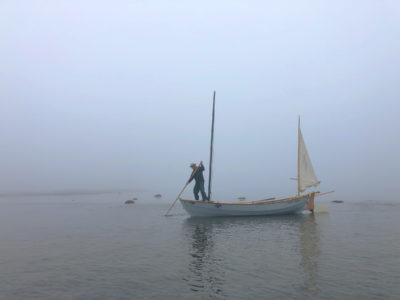
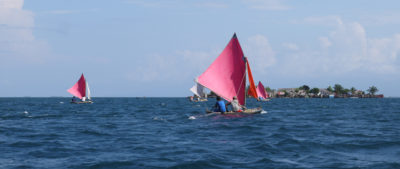
Nice story of a beautiful trip. Nice boat too. Don Kurlyko is a good friend. I like to see his Alaska out in the water.
Thank you for this wonderful report! This is the kind of trip I hope to take with CLARISA, my Ilur, launched just this spring. I was smitten by the Georgian Bay long ago and now your mouth-watering account is responsible for my resolve to follow these lovely liquid lanes sooner rather than later. THANK YOU!
Having sailed with Jeff Saar aboard his Alaska, I have always been impressed by the beauty and philosophy behind Kurylko’s design. You’re probably avoiding public discussion about this subject, but I’m mighty interested in hearing your comparisons between your new boat and the other love of your sail and oar life, the Phoenix III. I imagine it’s too early to say, but I’ll be looking forward to it sometime in the future.
Scot,
Jeff Saar’s Alaska photos on Don’s website were a big part of the reason I chose an Alaska! As for comparisons with Ross Lillistone’s Phoenix III design, keep in mind I am sailing with only the Alaska mainsail (85 sq ft) and not the ketch mizzen (49 sq ft), so much lower sail area—from what I’ve seen, the boats are not far apart in performance or capability (with the Phoenix III using the 76 sq ft balance lug).
The Alaska probably has a slight edge rowing, especially with two aboard; the Phoenix probably has an edge beating. Available space aboard is remarkably similar—luxurious for one, comfortable for two, starting to feel crowded with more—though Alaska has a marvelous lounging seat up in the bow that the Phoenix lacks.
Alaska seems a bit more tender initially, but hardens up nicely. Freeboard in the Phoenix III seems a bit higher. Alaska is noticeably heavier, so accelerates more slowly. Top end speed: Alaska should have the edge with longer waterline, but in practice they’ve seemed pretty equal so far with one brief trip together.
Both boats are easily recovered—singlehanded—from a capsize. The Alaska is remarkably stable when filled with water—maybe even more stable than she is empty. That alone is a great safety feature.
My conclusion so far: I expected it to be hard for the Alaska to live up to the Phoenix III. So far, though, I am not seeing any deficiencies and they seem to both be great sail-and-oar cruising boats.
I’d be happy to try and answer specific questions if anyone poses them. Thanks!
Love the area and your story Tom! Dianne and I have enjoyed this area very much. We will still visit again, as there is so much to see. One correction the “wave-sculpted granite” of West Fox Island, is in fact sculpted by glacial action, true that flowing water with aggregate under the ice is the culprit. The area is renowned for the beautiful sculpted rock left from the last ice age. At times “kettles” in the granite can be found with the the rock that carved them still in tact at the bottom. This season we managed to pass the narrows of Bear Drop Harbor as per your tale of Jugular Goes Everywhere! A highlight! Keep up the great tales and we will make a point of tailing you at some point!
Roy,
Thanks for chiming in. Bear Drop Harbor is one of the best places in the North Channel. Glad you made it up there.
Thanks for the correction on the glacial vs. wave sculpted rock—though of course, there has been plenty of wave sculpting after the glaciers retreated, eh?
By the way, apparently what you call “kettles,” we call potholes in Wisconsin. I did see a few around Georgian Bay.
Potholes it is, Tom! Upon checking, “kettles” are the larger depressions left by large chunks of glacial ice that are now either small lakes or low, wet depressions. Love chatting with you as I am always learning stuff! Eh! LOL!
Roy, I thought it might be one of those Canadian/European disconnects like “first floor” meaning one thing here, another thing there. But apparently, it’s just that I happened to be right about something!
Roy’s correct that those features are glacially sculpted rock, by sub-glacial water, but they’re different than potholes and kettles.
Potholes are open channel (stream) forms created by swirling eddy currents – you’ll find them below waterfalls and large rapids. They may have some furrowed channels, but they’re typically cylindrical in shape. Taylor’s Falls state park in Minnesota has some gigantic potholes. Watkins Glen in New York has some oft-photographed potholes. Fossil Falls, in California east of the Sierras, has some of the coolest potholes I’ve seen.
Kettles are circular depressions in glacial sediment (not rock). They’re created by the unequal meltout process of thick glacial ice that contains sediment. This is usually translated as depressions left by ice blocks, but that’s a bit of an oversimplification. Kettled topography has a lot of depressions. Kettle lakes are lakes within these depressions. Most lakes in Michigan, Wisconsin, and Minnesota are kettle lakes (if they’re roundish, or amoeba shaped, and not in bedrock, they’re probably kettles). Northern Ontario doesn’t have that many kettle lakes, they’re more often depression in bedrock.
High pressure water moving under a glacier can scour channels – which is what Roy’s first post suggested. Kelly’s Island in Ohio is a classic example (Google “Kelly’s Island glacial grooves”). Grooves is a key observation – a channel of water with sediment scoured the rock.
If you think back to wave-dominated, bedrock coastlines – you’ll soon conclude you don’t usually find features like you photographed. The waves will actually destroy those features. The land in Georgian Bay is rising due to the release of weight from the ice sheet melting thousands of years ago, and ‘fresh’ bedrock is being exposed. With time, that cool rock will weather and erode away.
Sorry for the long post – but you two sounded like you were curious.
Thanks for the story! That area is on my life list.
Andy, thanks for your post here. I am indeed curious about all that. I’ve seen the potholes at Taylors Falls; I also found a few similar, but smaller, formations in Georgian Bay, where it looked like a rock had gotten caught in a depression and swirled around via wave action rather than current. They certainly had the typical cylindrical shapes. Am I wrong about to conclude there are lake potholes as well as river potholes?
Thanks for the comments. My Alaska is turning out to be as good as I hoped, and Don was great to work with.
An Ilur would be a perfect boat for a Georgian Bay trip for sure—and I don’t think it’s possible to recommend the Canadian side of Lake Huron highly enough for small-boat cruising. Every year I keep thinking I should get out to the coasts—Maine, the Inside Passage—but it’s hard to make that commitment when there’s something this good so much closer to home.
Great writing and photos. It makes us want to explore the freshwater lakes but it’s hard to leave the saltwater ways of British Columbia in the summer. Maybe some fall!
Great story Tom! Thanks for taking the time to write it. Glad to see the new boat is doing what you expected of it.
Alex, thanks for your comment. You probably know as much as anyone about what an Alaska can do, with all your travels in HORNPIPE. Yep, I’m really happy with the design.
Tom,
Enjoyed the story. I live in Tennessee, have sailed just a wee bit in Owen Sound in the company of other Siren 17′ 2″ Micro-Cruiser owners, haven’t made it to the North Shore yet, but this story is further inclining my heart that way.
Ol Bill
Loved the story, Tom. The Alaska has beautiful lines and looks like she’s flying even at anchor in a mirror-smooth nook somewhere. I especially enjoyed your description of the Northern Lights. Your words are literary artwork. You are a craftsman and put us there with you, in absolute awe. Thank you for sharing all of that with us.
Wayne McCallum
Tom can you tell me how you set up your shock-cord “autopilot”?
Dick Baldwin
Tom wrote about his autopilot in “A Simple Tiller Tender” in the September 2017 issue of Small Boats.